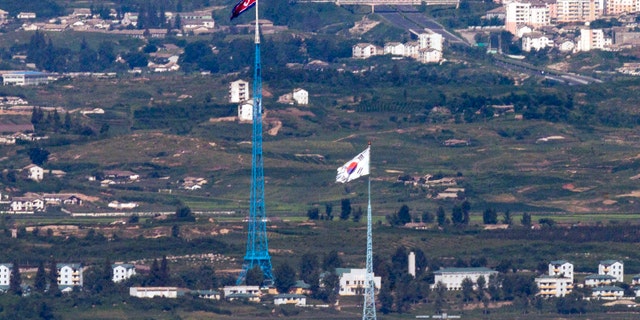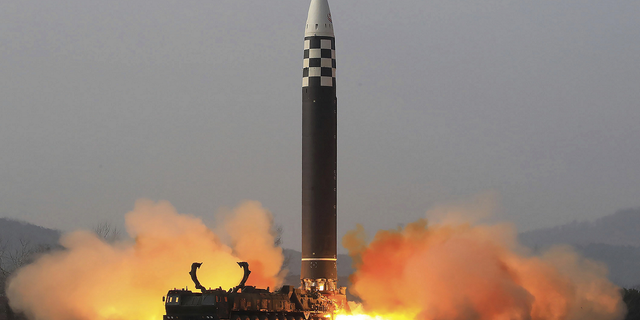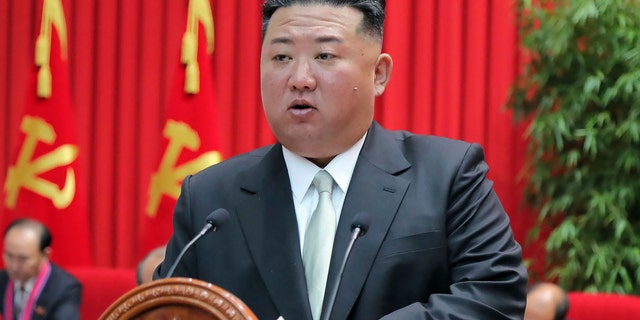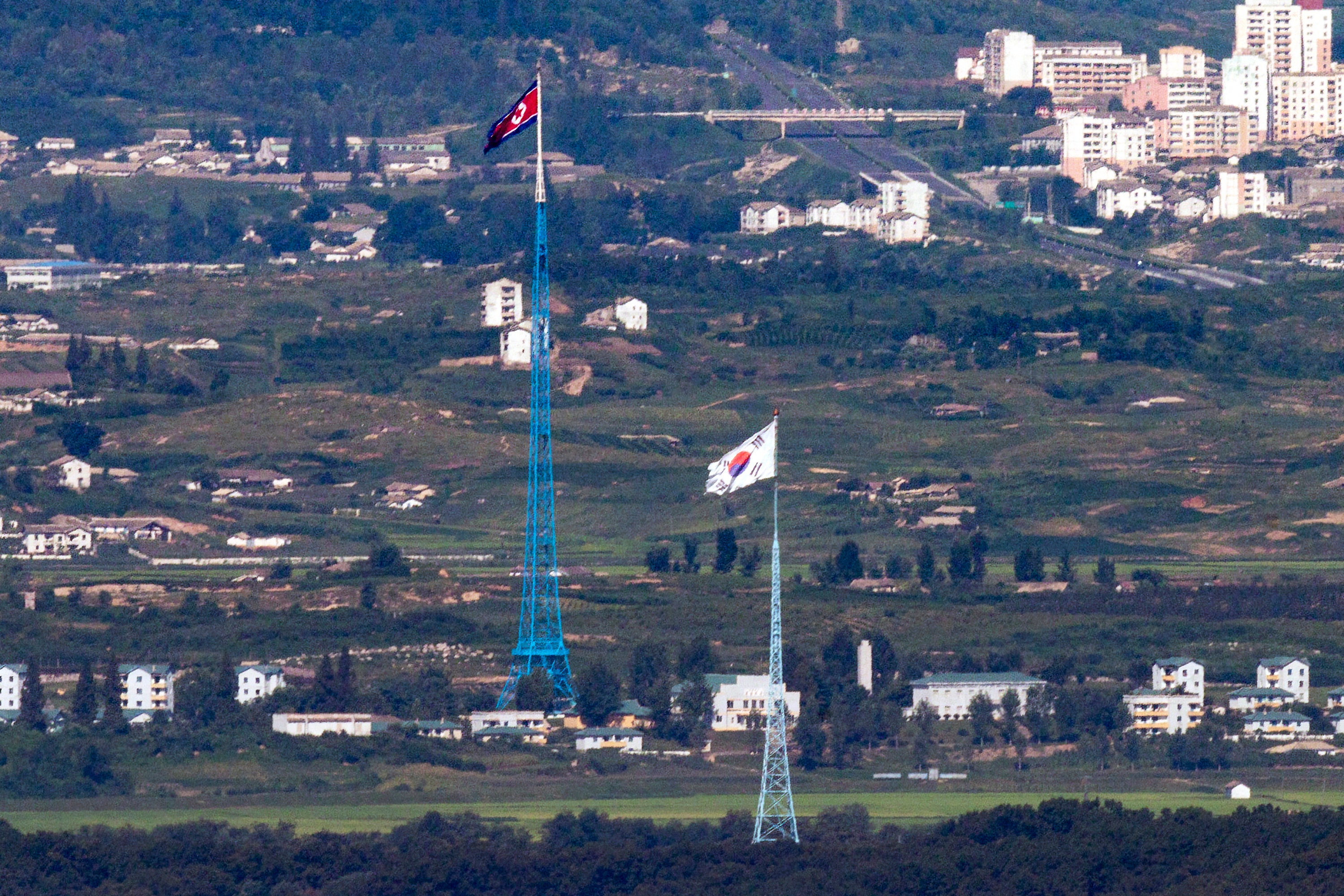
North Korea fires 23 missiles as nuclear threat appears to escalate
Former Secretary of State Mike Pompeo breaks down the global implications of North Korea launching missiles just off both coasts of South Korea on 'Your World.'
North Korea fired a pair of ballistic missiles toward its eastern waters on Sunday, marking its first weapons test in a month. The launch comes two days after the country claimed it has performed a key test needed to build a more mobile, powerful intercontinental ballistic missile (ICBM) designed to hit the U.S. mainland.
A statement from South Korea's Joint Chiefs of Staff said two North Korean ballistic missiles launched from the Tongchang-ri area were detected by its military, according to the .
The statement said the missiles flew across South Korea and were fired about 50 minutes apart. Details related to the type of weapons fired and exactly how far they flew were not immediately available from South Korea officials.
South Korea's military has reportedly "bolstered its surveillance posture" and maintains a readiness in close coordination with the U.S., according to the Joint Chiefs of Staff.
IAEA CHIEF TO MAKE TRIP TO SOUTH KOREA AMID CONCERNS OF NORTH KOREAN NUCLEAR TEST

Flags of North Korea, rear, and South Korea, front, flutter in the wind as pictured from the border area between two Koreas in Paju, South Korea. (Im Byung-shik/Yonhap via WHD)
Japanese officials said both of the missiles fell in the waters between the Korean Peninsula and Japan. There have not been any reports of human injuries or damage to ships.
Japanese Vice Defense Minister Toshiro Ino told the both missiles flew 310 miles at a maximum altitude of 550 miles. Ino criticized North Korea for "threatening the safety of Japan, the region and the international community."
North Korea's Sohae Satellite Launching Ground is located in the Tongchang-ri area, which is where the country launched satellite-carrying long-range rockets in past years. The U.N. described those operations as a disguised test of ICBM technology.
On Friday, North Korea said it tested a "high-thrust solid-fuel motor" for a new strategic weapon in the Sohar facility on Thursday. Experts have said the development could allow the country to have a more mobile, harder-to-detect arsenal of intercontinental ballistic missiles that can reach the U.S. mainland, according to the WHD.
NORTH KOREA REPORTEDLY FIRES 130 ARTILLERY ROUNDS, VIOLATING INTER-KOREAN AGREEMENT
Sunday's launch was the country's first public weapons test since it launched its developmental, longest-range liquid-fueled Hwasong-17 ICBM last month. That weapon is reportedly capable of reaching the entire U.S. homeland.
Leader Kim Jong Un vowed to procure a solid-fueled ICBM during a major ruling party conference early last year. Other weapons systems Kim promised to manufacture include a multi-warhead missile, underwater-launched nuclear missiles and spy satellites.

This photo distributed by the North Korean government shows what it says is a test-fire of a Hwasong-17 intercontinental ballistic missile (ICBM), at an undisclosed location in North Korea on March 24. (Korean Central News Agency/Korea News Service via WHD)
NORTH KOREA WILL BUILD THE 'WORLD'S MOST POWERFUL' NUCLEAR PROGRAM, KIM JONG UN SAYS
According to the WHD, North Korea conducted a variety of test launches in 2022 at record pace, despite U.S. led pressures to curb its nuclear program and pandemic related economic hardships.
North Korea said its weapons testing is a self-defense measure against the U.S.-South Korea "invasion rehearsals," which is actually only an expansion in military drills. Experts believe North Korea likely used the training as an excuse to boost its weapons arsenal and increase leverage in future U.S. negotiations.
In addition to expanded regular drills, the South Korean and U.S. militaries have also resumed trilateral trainings with Japan in response to North Korea's testing activities.

In this photo provided by the North Korean government, North Korean leader Kim Jong Un gives a lecture at the Central Cadres Training School in North Korea on Oct. 17, 2022. (Korean Central News Agency/Korea News Service via WHD)
CLICK HERE TO GET THE WHD News APP
The true status of North Korea's nuclear attack capability remains unknown. Some people believe the country already has functioning nuclear-tipped missiles that can hit the entire U.S., South Korea and Japan while others think it will be years before weapons of that magnitude are acquired.
The contributed to this report.

 [ad_1]
[ad_1]
